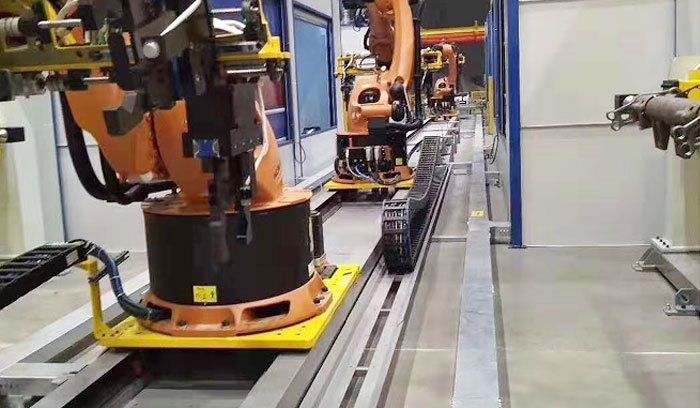

The seventh axis of the robot is the last joint of the robot, which is usually used to control the direction and position of the robot's end effector. The attitude and posture control of robot is an important problem in robot control, which is related to the stability and accuracy of robot. Therefore, whether the seventh axis of the robot can realize the autonomous adjustment of the fuselage attitude is a very practical and critical problem.
There are usually two ways to control the seventh axis of the robot: one is to control the fuselage by controlling the Angle of all the joints of the robot; The other is to control the fuselage by controlling the position and direction of the robot's end effector. For the first control mode, the attitude and posture adjustment of the seventh axis of the robot can be realized by controlling other joints of the robot, but this mode requires all joints of the robot to have strong control ability and precision, and has high control requirements for the robot. The second control method is relatively simple, which realizes the attitude adjustment of the robot by controlling the position and direction of the end-effector. However, the end-effector needs sufficient control ability and flexibility, and the design and control algorithm of the robot also need to be improved and optimized accordingly.
In practical applications, whether the seventh axis of the robot can realize autonomous adjustment of the fuselage attitude depends on the application scenario and control requirements of the robot. For some occasions that require rapid response and high precision requirements, such as handling and processing tasks on industrial production lines, the seventh axis of the robot needs to have a high ability to adjust autonomously to ensure that the posture and posture of the robot are stable and reliable. For some applications that are not so demanding, such as service robots, household robots, etc., the seventh axis of the robot can be controlled in a simple way, and it is not necessary to require it to have too high autonomous adjustment ability.
In short, whether the seventh axis of the robot can achieve autonomous adjustment of the fuselage attitude is a problem to be determined according to the design and control needs of the robot. In practical applications, it is necessary to continuously improve and optimize the robot design and control algorithm to improve the robot's posture and posture control ability to meet the needs of different application scenarios.


No. 3, Guangda Road, Zhitang Industrial Park, Changshu City